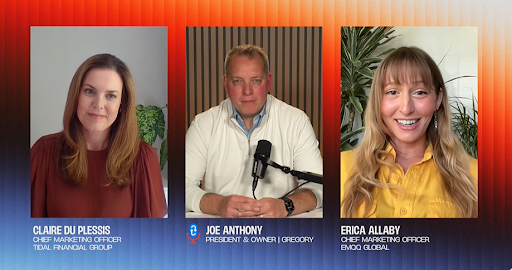You’re probably sleeping on email marketing.
A modern ETF marketing campaign generates buzz and buy-in through a variety of strategies. And it must, because the ETF market is increasingly crowded, making it more challenging for a a newly-launched fund to get the attention it deserves.
Email marketing is not a new idea. But it is a great way to build trust and traction with investors.
The direct line to investors
Erica Allaby, CMO at EMQQ Global, calls email marketing a “direct landline” to her audience. It solves a persistent problem in ETF marketing: it’s hard to know who your investors are. There is no easy way to track who owns shares, unless those people speak up.
“You are getting immediately in front of them in a way that is extremely meaningful,” Allaby said.
Her team uses email to deliver content that investors care about. They add context to the market, share timely updates, and take time to create clear product explanations that are not always possible in other formats. “We want them to actually feel like they’ve learned something and can pull away from that and bring it into the context of their own life,” she said.
At EMQQ, market relevance can change fast. Emerging markets and tech themes come in and out of focus depending on global news. Allaby doesn’t try to predict those moments. She builds the system so they can respond fast.
“You can’t time the market. You can’t make these things up,” she said. “But if your content foundation is solid, you’re not lighting the whole house on fire when something happens. You’re just turning the dial up.”
That foundation includes consistent email outreach. Regular updates mean that when something newsworthy happens, EMQQ already has the relationships and infrastructure to act on it.
Unlocking a quality email list
Of course, even the best email campaign won’t work without the right audience. That’s why building and maintaining a high-quality email distribution list is one of the most important (and most often overlooked) parts of ETF marketing.
At Westwood Holdings Group, for example, the marketing and distribution teams work closely together to grow a list that reaches the financial advisors who are most relevant for Westwood’s growing ETF suite. Financial advisors remain a core audience for Westwood, so list-building isn’t left to chance. The sales team contributes by identifying advisors through their day-to-day conversations and business development efforts. Meanwhile, the marketing team supports list growth through multiple channels, partnering with organizations like RIA Channel to host educational webinars, running targeted lead generation campaigns on LinkedIn, and continually producing timely, actionable content that encourages new advisors to engage.
By investing in this joint approach, Westwood ensures its email campaigns aren’t being broadcast into the void. They’re targeted to an engaged, opt-in audience who are actively looking for differentiated investment strategies. That focus allows every subsequent email, whether it’s a fund update, market commentary, or webinar invite, to reach advisors who are much more likely to engage, respond, and take action.
Measure, adjust, reuse
Part of what makes email so powerful is the data. Open rates and click-throughs show what content works. That feedback loop helps marketers make smarter decisions and improve over time. It also lets them reuse content that still performs.
And because subscribers have opted in, there’s a baseline of trust. When someone opens a fund update or reads a market commentary, they are more likely to engage with the message. That kind of interaction is harder to get from a cold display ad or a generic social post.
Any successful email marketing campaign requires consistency. Email communication is a tool that gets better every time you use it.
